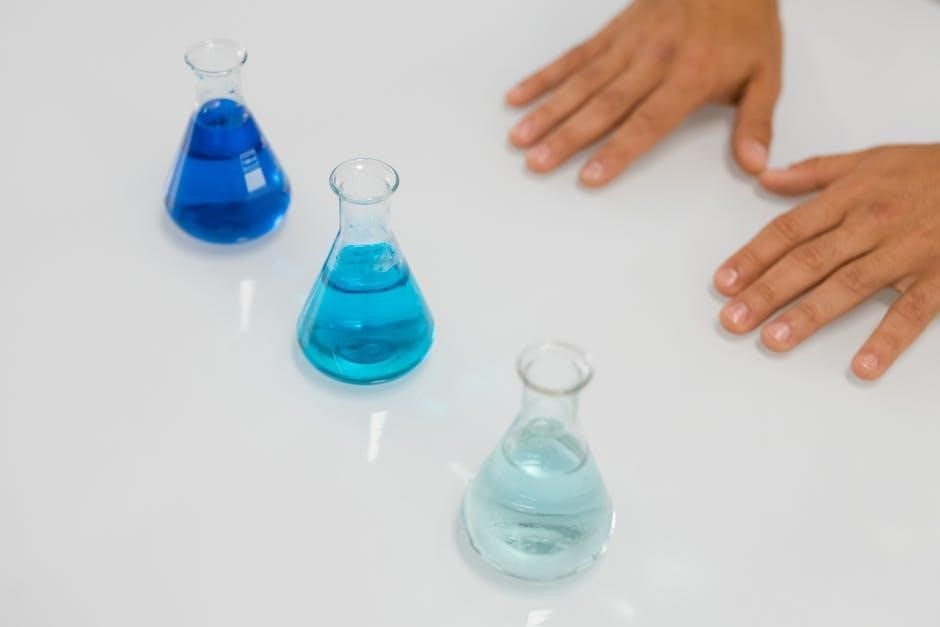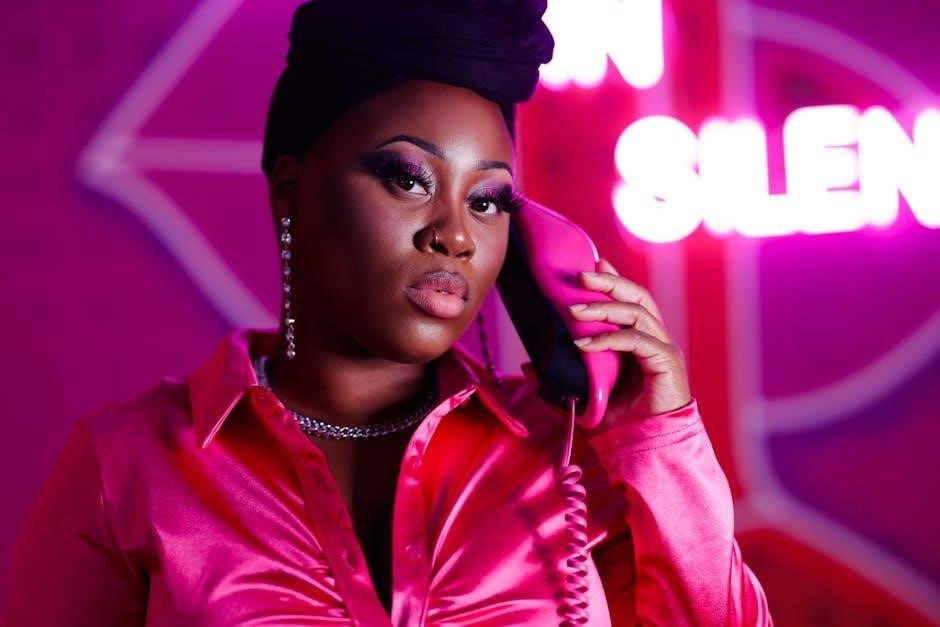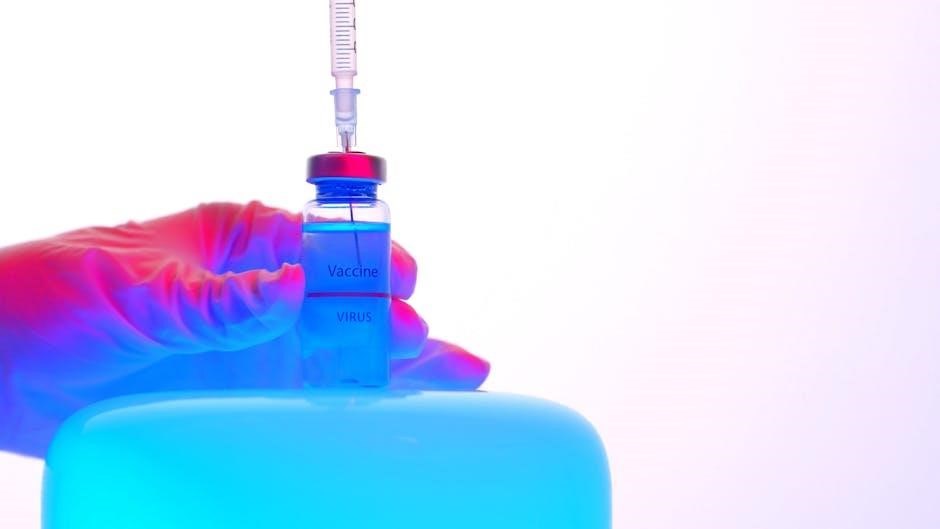The True Colors Personality Test is a practical tool for understanding individual personalities through four color-coded styles: Blue, Gold, Green, and Orange. It helps individuals gain self-awareness and improve interpersonal interactions by identifying strengths and potential areas for growth. This model is widely used in educational, professional, and personal development contexts to foster effective communication and teamwork.

Overview of the True Colors Model
The True Colors Model is a personality assessment framework that categorizes individuals into four primary color-coded personality types: Blue, Gold, Green, and Orange. Each color represents distinct traits, preferences, and behaviors, offering insights into how individuals perceive the world and interact with others. The model emphasizes understanding strengths and weaknesses to enhance communication, teamwork, and personal growth. It is widely applied in educational and professional settings to foster collaboration and improve relationships. By identifying dominant and secondary colors, individuals can gain a deeper understanding of their motivations and tendencies, enabling more effective interactions in both personal and professional environments.
History and Development of the Test
The True Colors Personality Test was developed in the 1970s by Don Lowry, drawing inspiration from earlier temperament theories. It was designed to simplify complex personality assessments into a user-friendly format. The test gained popularity in the 1980s and 1990s as a practical tool for understanding individual differences. Over time, it has evolved to incorporate modern psychological insights while maintaining its core principles. Today, it is widely recognized for its accessibility and effectiveness in educational, corporate, and personal development contexts, helping individuals and teams improve communication and collaboration. Its enduring relevance lies in its ability to provide clear, actionable self-awareness.

Understanding the Four Personality Colors
The True Colors Personality Test categorizes personalities into four distinct colors: Blue, Gold, Green, and Orange. Each color represents unique traits, strengths, and growth areas, guiding self-awareness and interpersonal harmony.
Blue: Characteristics, Strengths, and Weaknesses
Individuals with a Blue personality are known for their empathy, loyalty, and strong interpersonal skills. They are naturally supportive and excel at creating harmonious relationships. Blues thrive in collaborative environments and are often seen as peacemakers. Their strengths include active listening, emotional intelligence, and a genuine care for others’ well-being. However, Blues may struggle with taking criticism personally and can be overly sensitive. They may also find it challenging to prioritize tasks and manage time effectively. Despite these weaknesses, Blues bring warmth and understanding to any team or relationship, making them invaluable in fostering connections and trust.
Gold: Traits, Advantages, and Challenges
The Gold personality type is characterized by a strong sense of responsibility, organization, and a detail-oriented approach to life. They value structure, rules, and planning, making them reliable and goal-oriented individuals. Golds excel at setting high standards and maintaining consistency, which often earns them respect. However, their perfectionism can lead to stress, and they may struggle with adaptability when faced with unexpected changes. Additionally, their tendency to focus on tasks over emotions can sometimes make them appear overly critical. Despite these challenges, Golds bring stability and practicality to any situation, making them indispensable in roles requiring precision and accountability.

Green: Attributes, Skills, and Potential Drawbacks
The Green personality type is known for its analytical nature, independence, and innovative thinking. Greens excel at problem-solving and thrive in environments that require strategic planning and intellectual exploration. They are naturally curious and enjoy exploring new ideas, making them creative and forward-thinking individuals. However, their tendency to overanalyze can lead to indecisiveness, and their focus on logic may sometimes make them appear detached from emotional aspects of situations. Despite this, Greens bring a unique ability to think critically and offer innovative solutions, making them invaluable in dynamic and challenging settings.
Orange: Qualities, Strengths, and Areas for Growth
The Orange personality type is characterized by its energetic, social, and adaptable nature. Oranges are naturally optimistic, thrive in dynamic environments, and excel at motivating others. Their enthusiasm and creativity make them excellent problem solvers and initiators of new ideas. They are highly resilient and capable of thinking on their feet, which allows them to navigate change and uncertainty with ease. However, their impulsive tendencies can sometimes lead to hasty decisions, and their focus on action may cause them to overlook details. Additionally, Oranges may struggle with patience and persistence in tasks that require long-term commitment.
Practical Applications of the True Colors Test
The True Colors Personality Test offers practical tools for enhancing teamwork, leadership, and communication in various settings. It aids in conflict resolution, educational strategies, and workplace dynamics by providing insights into individual and group interactions. This model empowers individuals to understand their strengths and adapt to diverse social and professional environments effectively.
Using True Colors in Team Building and Leadership
The True Colors Personality Test is a valuable tool for fostering effective teamwork and leadership. By identifying individual personality styles, leaders can create balanced teams that leverage diverse strengths. For instance, Blue personalities excel in building trust and harmony, while Gold individuals bring organization and accountability. Green thinkers drive innovation, and Orange personalities often take the lead in initiating action. Understanding these dynamics helps leaders assign roles strategically, enhance collaboration, and address potential conflicts. This approach promotes a cohesive and productive team environment, enabling leaders to maximize their team’s potential and achieve shared goals effectively.
Applying True Colors in Educational Settings

Educators widely use the True Colors Personality Test to enhance teaching and learning experiences. By identifying students’ personality styles, teachers can tailor instruction to meet diverse needs. For example, Blue learners thrive in collaborative environments, while Gold students respond well to structured, goal-oriented tasks. Green personalities excel in analytical settings, and Orange individuals benefit from hands-on, creative activities. This approach fosters inclusivity, improves student engagement, and helps educators manage classroom dynamics effectively. It also encourages empathy and understanding among students, creating a supportive learning environment that caters to all personality types.
Role of True Colors in Conflict Resolution
The True Colors Personality Test plays a significant role in conflict resolution by helping individuals understand and navigate differing perspectives. By identifying personality styles, such as Blue (empathetic), Gold (structured), Green (analytical), and Orange (spontaneous), conflicts can be addressed more effectively. Understanding these traits fosters empathy and reduces misunderstandings. For instance, Blue individuals can mediate emotional tensions, while Gold personalities ensure fair and logical resolutions. This framework encourages open communication, active listening, and collaboration, leading to more harmonious outcomes. It also equips individuals with practical strategies to manage disputes constructively, promoting mutual respect and cooperation.

Accessing and Utilizing the True Colors Test PDF

The True Colors Personality Test PDF is easily accessible online and often includes supplementary materials like handouts for deeper self-discovery and practical applications. Use it to identify personality styles, understand strengths, and develop action plans for personal or professional growth. The PDF format makes it convenient for printing and sharing in group settings, ensuring everyone can benefit from its insights.
How to Obtain the True Colors Personality Test PDF
To obtain the True Colors Personality Test PDF, search online using keywords like “True Colors Personality Test PDF” or “Discovering Our Personality Style Through True Colors.” Many websites offer free downloads, including educational institutions and professional development platforms. Ensure you download from a reputable source to access authentic materials. The PDF typically includes the test itself, along with supplementary handouts for self-assessment and group activities. Once downloaded, you can print copies for personal or group use, making it a convenient tool for workshops, classrooms, or team-building exercises.
Interpreting Results and Creating Action Plans

After completing the True Colors Personality Test PDF, participants receive insights into their dominant and secondary colors. Each color represents distinct traits, strengths, and areas for growth. Blue individuals are empathetic, while Gold personalities excel in organization. Green thinkers are analytical, and Orange types are adventurous. To create action plans, individuals should identify personal goals, such as improving communication or managing stress, and develop strategies to leverage their strengths while addressing weaknesses. Reflecting on results and seeking feedback can enhance self-awareness and guide meaningful personal development. This process fosters growth and helps individuals align their actions with their true potential.
Case Studies and Examples of Successful Implementation

The True Colors Personality Test PDF has been successfully implemented in various settings, demonstrating its effectiveness in fostering understanding and collaboration. For instance, a high school used the test to improve student-teacher communication, leading to better academic performance. In a corporate setting, a marketing firm applied the test to align team communication styles, resulting in a 30% increase in productivity. Additionally, a healthcare organization utilized the test to enhance patient-caregiver interactions, reducing misunderstandings and improving patient satisfaction scores by 25%. These examples highlight the practical benefits of the True Colors model in real-world scenarios.

The True Colors Personality Test PDF offers a valuable framework for personal growth, effective communication, and team collaboration. By understanding individual strengths and weaknesses, users can foster harmony and productivity in various settings. The next steps involve applying these insights to real-life challenges, encouraging continuous learning, and sharing the benefits with others to promote a more empathetic and efficient environment.
Summarizing the Benefits of the True Colors Test
The True Colors Personality Test PDF provides a clear framework for self-discovery and interpersonal understanding. It helps individuals identify their strengths, weaknesses, and communication styles, fostering empathy and collaboration. By categorizing personalities into four color-coded styles, the test simplifies complex traits, making it accessible for personal and professional growth. Its practical applications in team building, education, and conflict resolution highlight its versatility. The test not only enhances self-awareness but also promotes effective communication, leading to stronger relationships and improved teamwork. Its benefits extend to various settings, making it a valuable tool for lifelong learning and development.
Encouraging Further Exploration and Learning
Exploring the True Colors Personality Test PDF offers a pathway to deeper self-understanding and interpersonal connection. By engaging with its resources, individuals can uncover new insights into their personality style and how it interacts with others. Encouraging further learning involves applying the test’s findings in real-world scenarios, such as improving communication or resolving conflicts. Sharing the model with others fosters a culture of empathy and collaboration. Continuous exploration of the True Colors framework can lead to personal growth, strengthened relationships, and enhanced teamwork. Embrace the opportunity to explore and apply its principles for a more harmonious and productive environment.
